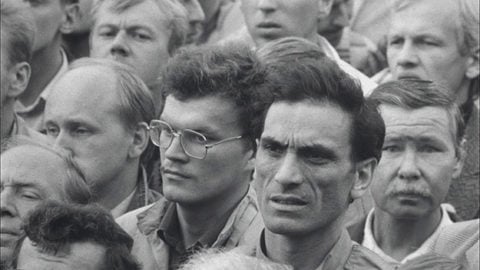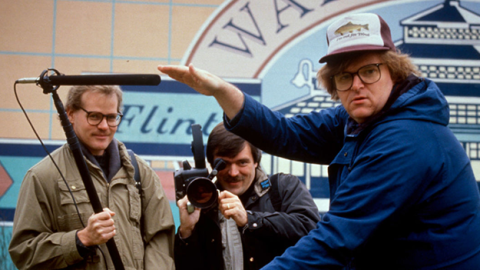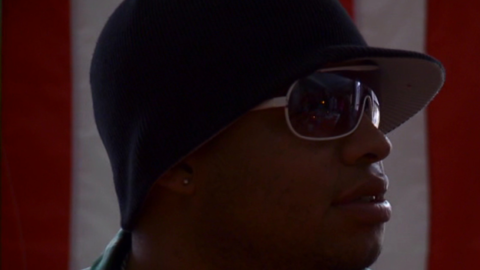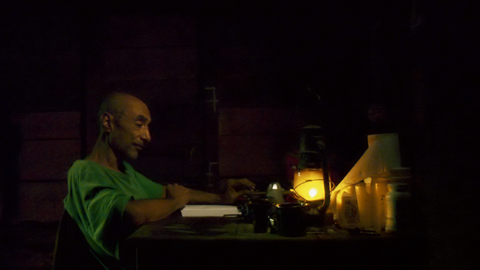Make It Real: The Varieties of Nonfiction Experience
Normally, when looking back at an audience from the vantage of the front row, you’ll see attention funneled onto a central attraction. A speaker, a performer, or a movie screen, for example. But on this autumn afternoon in Williamstown, Massachusetts, attention was scattered throughout the ’62 Center for Theatre and Dance. Some stared blankly ahead, idling on a fixed logo on an otherwise white screen. Others leaned back in their chairs to stare at the ceiling. Someone leaned forward to surreptitiously eat a muffin. Another took notes on a small pad. A lot of people had their eyes closed. I frankly didn’t know where to look. My gaze wandered among the intricacies of the rafters, balconies, and lighting fixtures of the ’62 Center, a spotless new facility on the Williams College campus. I tried closing my eyes, but quickly opened them again when I felt myself drifting off to sleep. Also I didn’t want to close myself off from the others—I didn’t want to pretend that I was alone, or wearing headphones. Though we were listening to a podcast, we were doing so collectively.
The podcast in question was Love & Radio, a now 10-year old program richly crafted from interviews with hard-to-define, often morally slippery characters. This latest episode conjured all kinds of imagery, thanks to New Age subject Timothy Willey’s tales of telepathic dolphins and psychedelic visions, and his discordantly professorial English accent. But where was I supposed to project that imagery? How was I supposed to exist in that space when there was something to hear but nothing to see? In terms of theatrical experience, something was definitely missing—a visual component—but what took its place?
Such questions came courtesy of Wind-Up Fest, which replaces the Williamstown Film Festival, and yokes together Williamstown with neighboring North Adams (home to MASS MoCA) and True/False co-founder Paul Sturtz with Images programmer Sandra Thomas. The idea is to showcase not just documentary film, but all manner of nonfiction—to put Love & Radio alongside a multi-strand documentary like Uncertain, to interpolate animated shorts with lectures and slideshows, to alternate between live performance and archival footage. In terms of material, these permutations harmonized well. The reportage and storytelling accomplished by radio veteran Scott Carrier was simpatico with that of Michael Obert’s Song From the Forest and Laurent Bécue-Renard’s Of Men and War. And it was heartening to see artists, journalists, and academics of various stripes talking shop over drinks at the North Adams Elks Lodge, and audiences acknowledging similarities between disciplines rather than recoiling over breached borders.
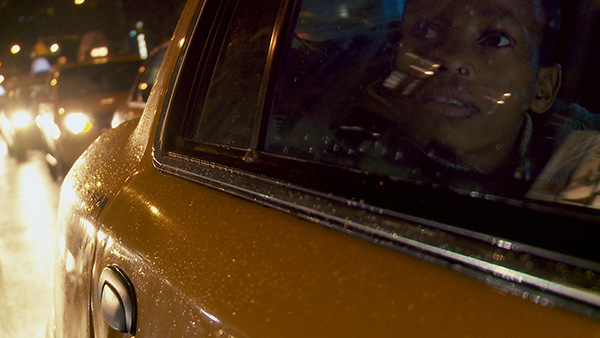
Song From the Forest
But there’s a flip side as well. It’s hard not to weigh one technique against another—not necessarily judgmentally, but for the sake of determining how one functions differently than another, and how one excels at one thing more than another. That long-form literature allows for more heft and nuance than a short-form film isn’t a surprise, nor is the fact that film is more visually engaging than, well, radio. Yet when the two are showcased alongside one other in an event setting, you can’t help but have somewhat uniform expectations for a sense show. And despite the nonfiction banner shared by the disciplines on display, they are not created equal in terms of theatrical impact. You could read that as damning, but I mostly mean to state a fact. Though I also mean it as an invitation.
Feature filmmaking presents a high bar. Particularly in a theatrical setting, films have an advantage over other forms. Most films employ both picture and sound, and are painstakingly crafted to function at a certain length, over a certain time, in a certain form. You can’t ask a lecture to be a movie, nor can you ask the same of a slideshow or podcast for that matter. They’re forms with different values, strengths, and functions. But mixed together as they were at Wind-Up, in settings where a large white screen waited expectantly on stage, other forms sometimes seemed inadequate or incomplete. The films were a tough act to follow—and precede. Especially when the lineup included two of the best nonfiction features of the year, Of Men and War and Breaking a Monster, along with several of the best nonfiction shorts of the year, including Pia Borg and Edward Lawrenson’s Abandoned Goods and Elizabeth Lo’s Hotel 22—altogether, wildly different films that show how vast is the purview of nonfiction cinema.
The Wind-Up mix raises questions of how best to present other forms of nonfiction in a festival setting, and also of how these forms are best presented, period. To address the former, I confess to being impatient with a few slideshow lectures that lacked any sense of time-calibrated craft or theatrical oomph—if you’re hastily telling the audience you’re running out of time, rest assured you’re wasting the audience’s time—and, conversely, impressed by filmmaker Penny Lane’s incisive and funny demonstration of how her upcoming nonfiction feature, Nuts!, tells a ton of tiny lies in order to access a greater truth. Lane’s advantage is that she’s a storyteller and, as it happens, a natural performer. Hers wasn’t a presentation, or a download of information and research. It was, as it should be, an act.
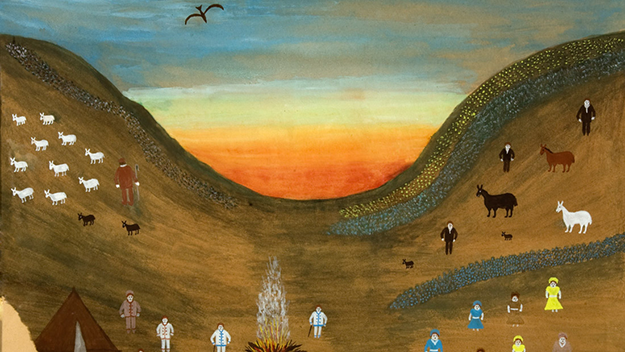
Abandoned Goods
Because of its polish and sculpted shape, the Love & Radio podcast played quite well with the crowd—so well that the uncertainty of where to look was less a problem than a challenge. How could this form of nonfiction storytelling work better in this setting, considering how well it works as audio art? In conversation over the weekend, producer Brendan Baker said his ideal listener wears headphones late at night, and thus that he wished the ’62 Center had been completely dark for the podcast. I’m not certain that would have solved for the spatial issues, and certainly wouldn’t have solved for my encroaching drowsiness, but I loved the thought behind it, the sense that there might be a more effective presentation. There have been many attempts at visually enlivening radio, from Ira Glass’s collaborations with dancers Monica Bill Barnes and Anna Bass—selections from which Barnes and Bass performed at Wind-Up—to the animated accompaniments for the ongoing StoryCorps oral history project. The primacy of sound is essential to radio’s power, and essential as well to its presentation in a live setting. But the question lingers: what might be gained from gathering as a group to listen?
Not dissimilar, though arriving from the opposite direction, was a selection of audio-visual performances by Sam Green and David Cerf. Seated on stage behind a desk and off-center beneath the movie screen, they alternated playing narrator for short segments about Louie Armstrong’s home audio recordings, Yellow Page listings shenanigans, and the endangered species of the public telephone, among others. Shorn of their act’s normally robust live music component, their bits were exactly as effective as the quality of their writing and filmmaking. At its best, Green and Cerf’s act was clever, confessional, inviting, threading voice and visuals, presence and craft, with showmanship. At its worst—and it was very scarcely so—their performance could be canned, suffering from either writing that didn’t take off or stagey shtick. At those times, parts stood out from, and cast doubt over, the whole.
That’s less of a problem with film, which barrels at us as a whole, effectively bundling sound and picture and past and present and objectivity and subjectivity regardless of if or how it chooses to do so. The struggles of other forms to stand alongside films in a setting such as Wind-Up Fest served as something of a deconstruction of film form, with each offering elements (rather than a totality) of nonfiction artistry. Over here’s some amazing, if contextless, archival footage. Over there’s some great photography, and long-form reportage, and personal narratives, and evocative audio. It helped me appreciate anew the hard-fought miracle of nonfiction cinema, which, at best, can accomplish all of this at once. It also made me want to go home and find the optimal settings and format for each, to interrogate and experience reality via long and short-form text, and podcasts, and performance. And finally, it made me curious as ever about the bleed between them all, and how one might inform or alter another in productive ways. Assuming Wind-Up Fest keeps whirring into the future, it’ll be fascinating to see what and who rises to the occasion—and maybe how, and why, I might want to listen to a podcast in a public theater.
The first annual Wind-Up Fest ran October 15 to 18 in North Adams and Williamstown, Massachusetts.



